Arroz con Pollo is a Puerto Rican one-pot meal bringing meat and starch together. Prepare to tantalize your taste buds, evoke nostalgia, and discover the joy of creating a dish that celebrates culture, warmth, and the simple pleasures of a shared meal. Let’s dive into crafting the perfect arroz con pollo!”
Arroz con Pollo is the go-to dish for busy times, satisfying hunger quickly with its hearty flavors. It brings warmth and invokes the feeling of family gatherings. Its comforting aroma and wholesome taste create an ambiance of togetherness, making it an ideal choice when a nourishing meal is needed without sacrificing taste or tradition.
Want more favorite One-Pot Meals? Try Pastelon, Eggplant Lasagna, Sancocho, or Seafood Pomodoro.
Jump To
Why this recipe works
- Versatile and Comforting Dish: Arroz con pollo is a versatile and satisfying meal that can quickly become a staple in your cooking repertoire. Its simple preparation and the ability to customize ingredients to suit personal preferences or dietary needs make it a go-to dish for many occasions, whether it's a cozy family dinner or a casual gathering with friends.
- One-Pot Wonder: This dish's charm lies in its simplicity. It's a one-pot meal that minimizes the number of dishes to clean up afterward. It's convenient for home cooks who appreciate a delicious meal without the hassle of multiple pots and pans.
- Nutrition and Balance: Arroz con pollo is a balanced meal that combines chicken protein with rice carbohydrates. It becomes a nutrient-rich dish, offering vitamins, minerals, and essential nutrients when prepared with various vegetables. It's a wholesome meal that can be part of a well-rounded diet.
Ingredient Notes
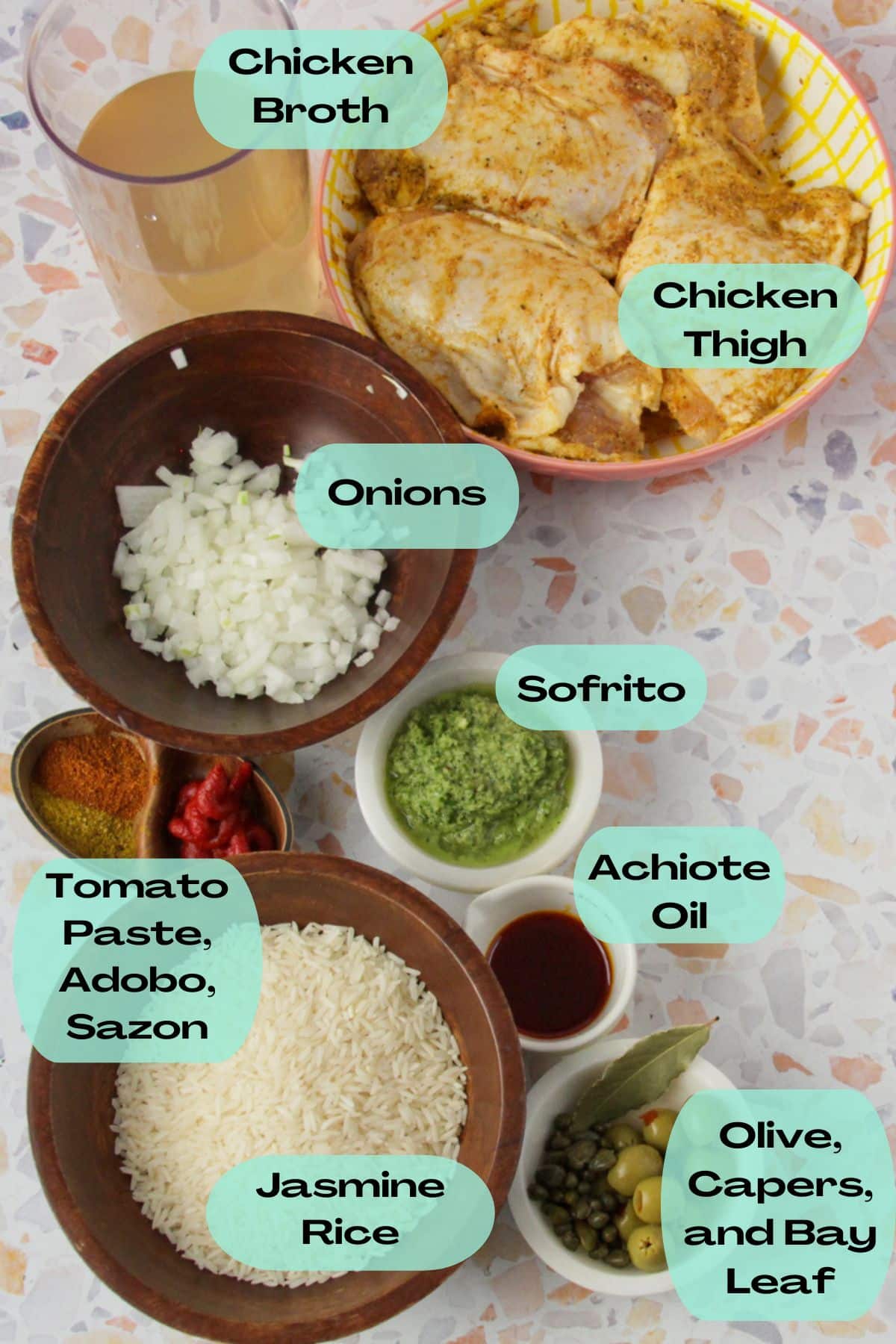
- Rice: Jasmine rice has a sweet, flowery aroma that blends well with anything you cook. However, short-grain rice would be a great option for this recipe.
- Chicken: This recipe works well with the whole chicken cut up into eight parts, or in this case, I only used chicken thighs with skin on for added flavor and fat.
- Achiote Oil: This is the source of color and flavor. Achiote is like the poor man's saffron. It is a lot less expensive than saffron, and it provides a great source of color. The smell and color are a bit smokey, reminiscent of saffron. In my post for Achiote Oil, I covered the basics of achiote and how to make this oil.
- Garlic Paste: Although not photographed in this image, it is what is seasoning the chicken thighs. Please see step .a for more information.
See my recipe card below for a complete list of the ingredients with measurements.
Variations and Substitutions
- Meats: This recipe is made with bone-in chicken thighs. However, you may use boneless chicken (thigh, breast or a combination of both), ham, sausages (in Puerto Rico, we prefer Vienna Sausages), chorizo, and even a center-cut boneless pork chops diced would make a great substitution.
- Vegetables: Corn, peas, diced carrots (all of which can be found bagged in the freezer isle).
- Spices: If you have saffron and not Achiote oil, add two to three springs or hairs of saffron to your rice. Add it when you add the onions to draw out the color and flavor of the saffron.
How to make Arroz con Pollo
Here are the step-by-step instructions to make Arroz con Pollo
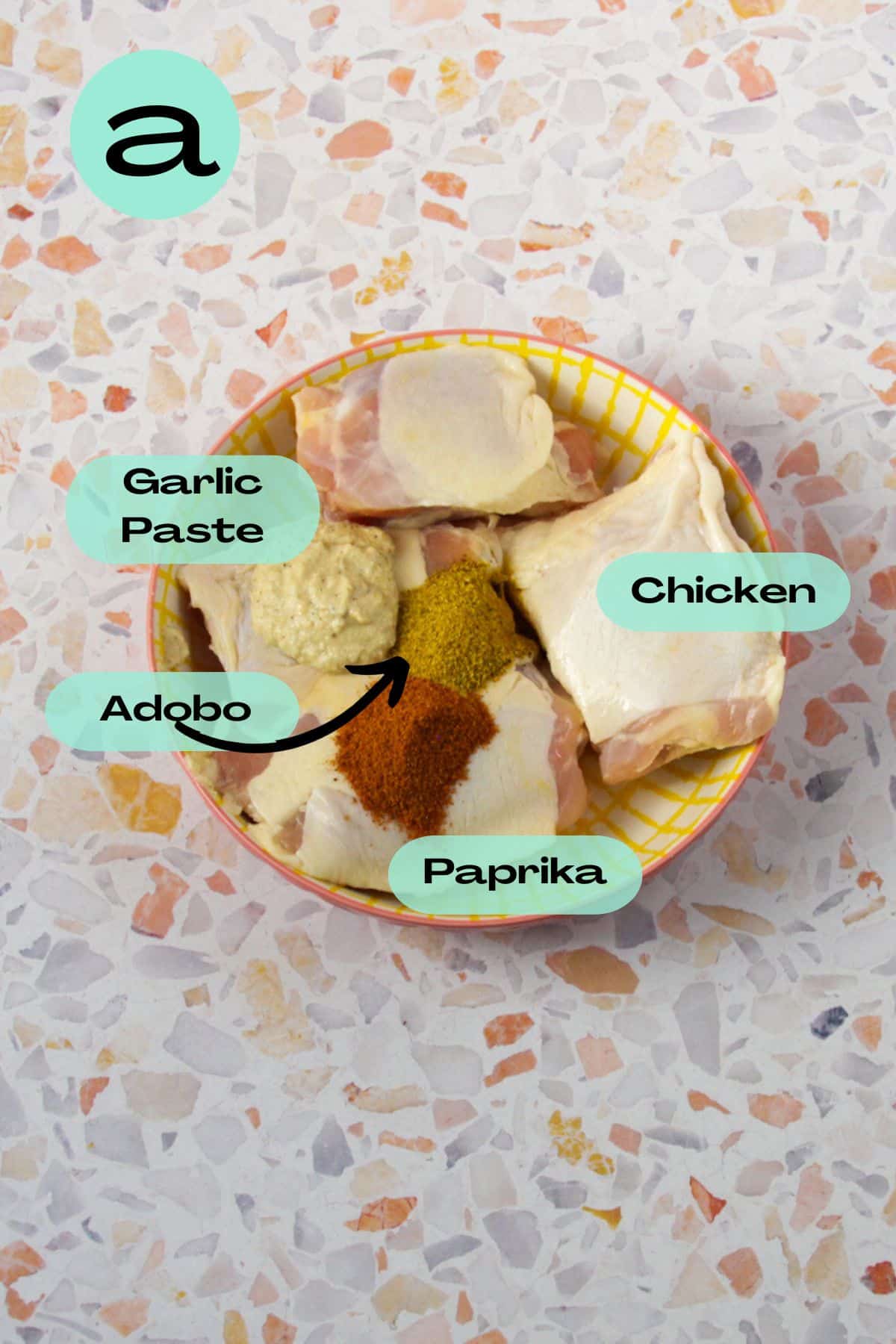
- Season and marinate the Chicken in advance. Use garlic paste, adobo, and paprika. Allow to marinate for at least 30 minutes at room temperature or overnight. You want the chicken to hold its flavor separate from the rice.
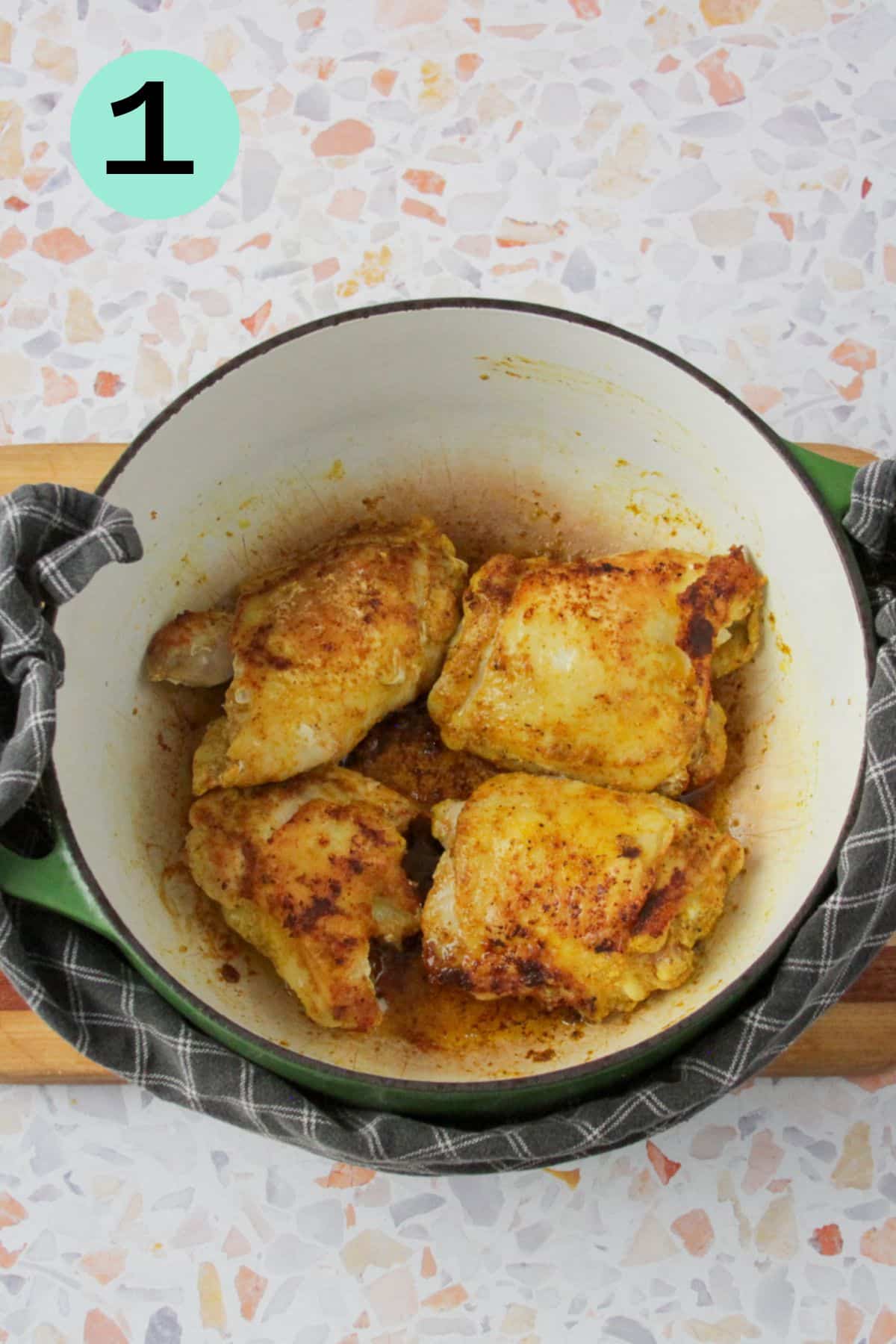
- Sear chicken in a deep pan.
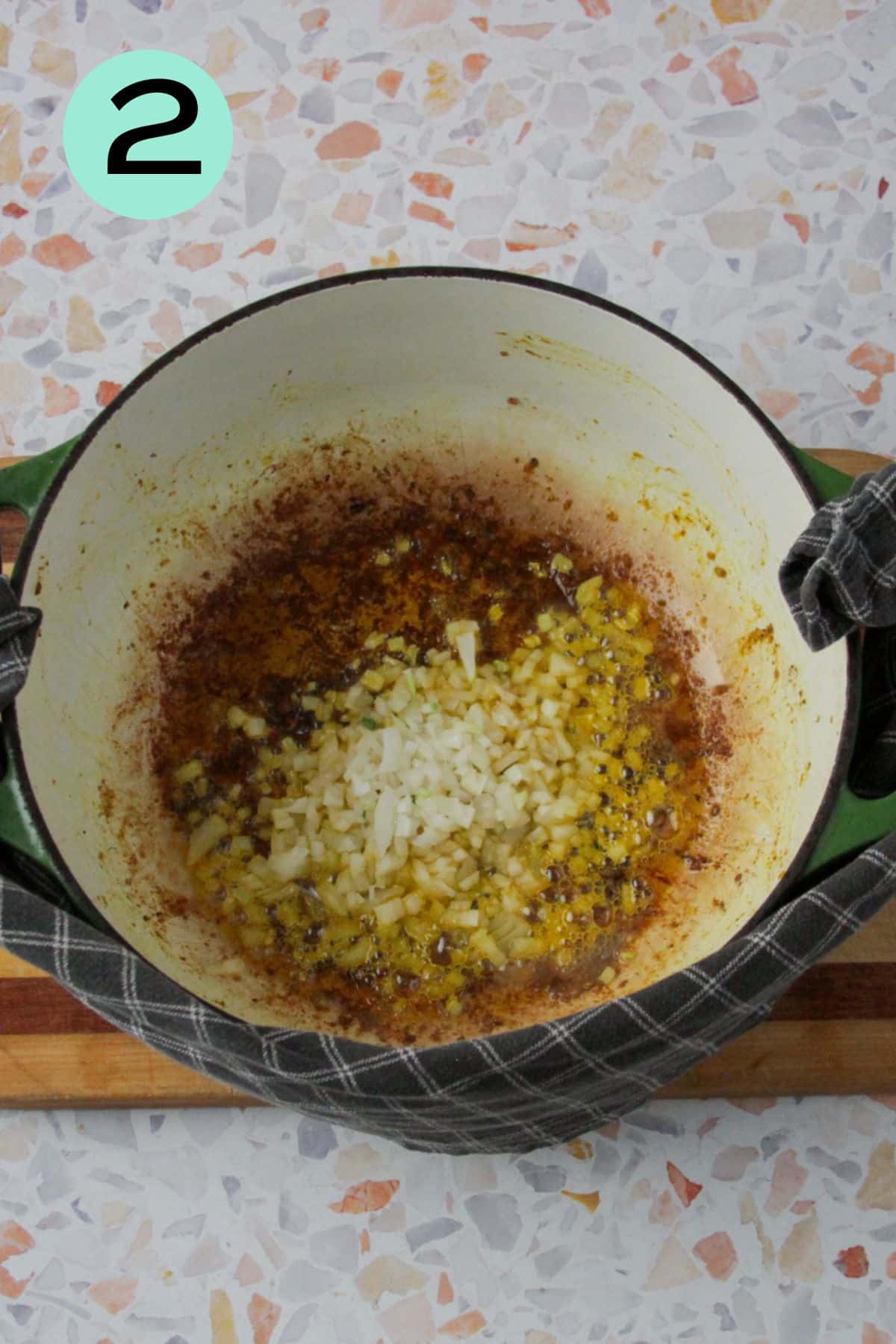
- Once chicken has browned on all sides remove from pot and set aside. Add onions to the pan and sautee until translucent.
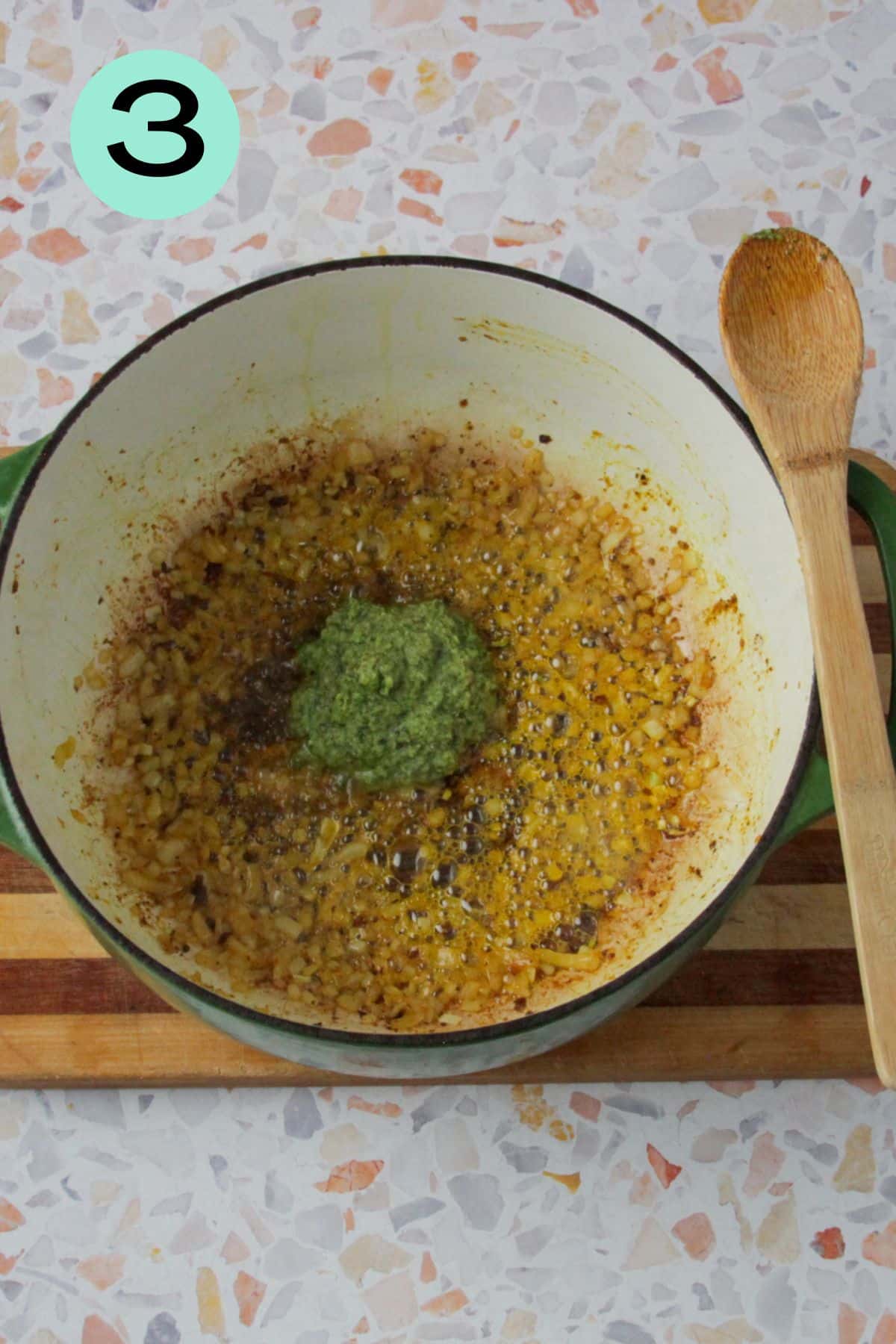
- Once onions have softened, add sofrito.

- Cook sofrito for about a minute or two, then add tomato paste. **See note**
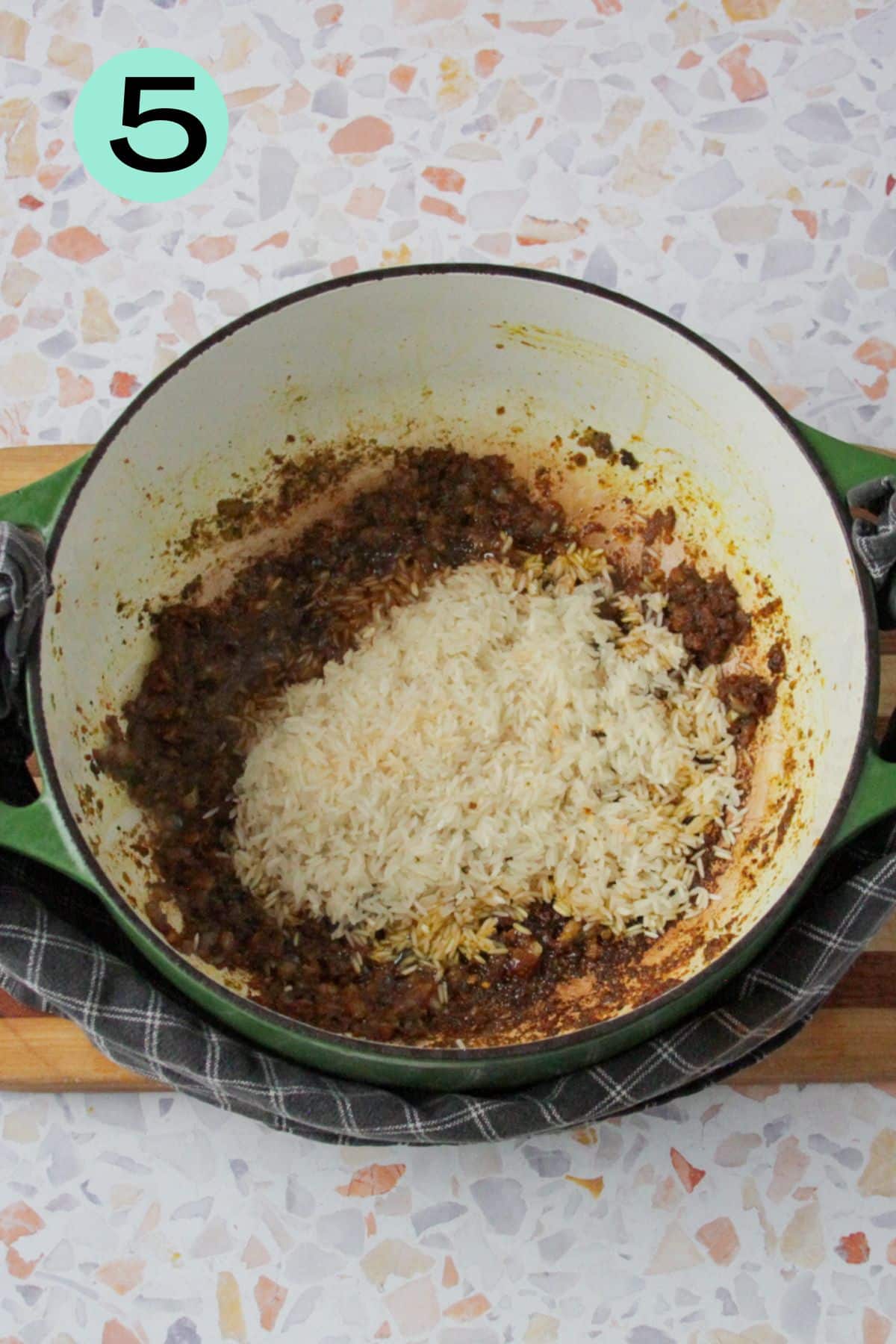
- Add rice and achiote oil. Toss the rice in the oil to cover.
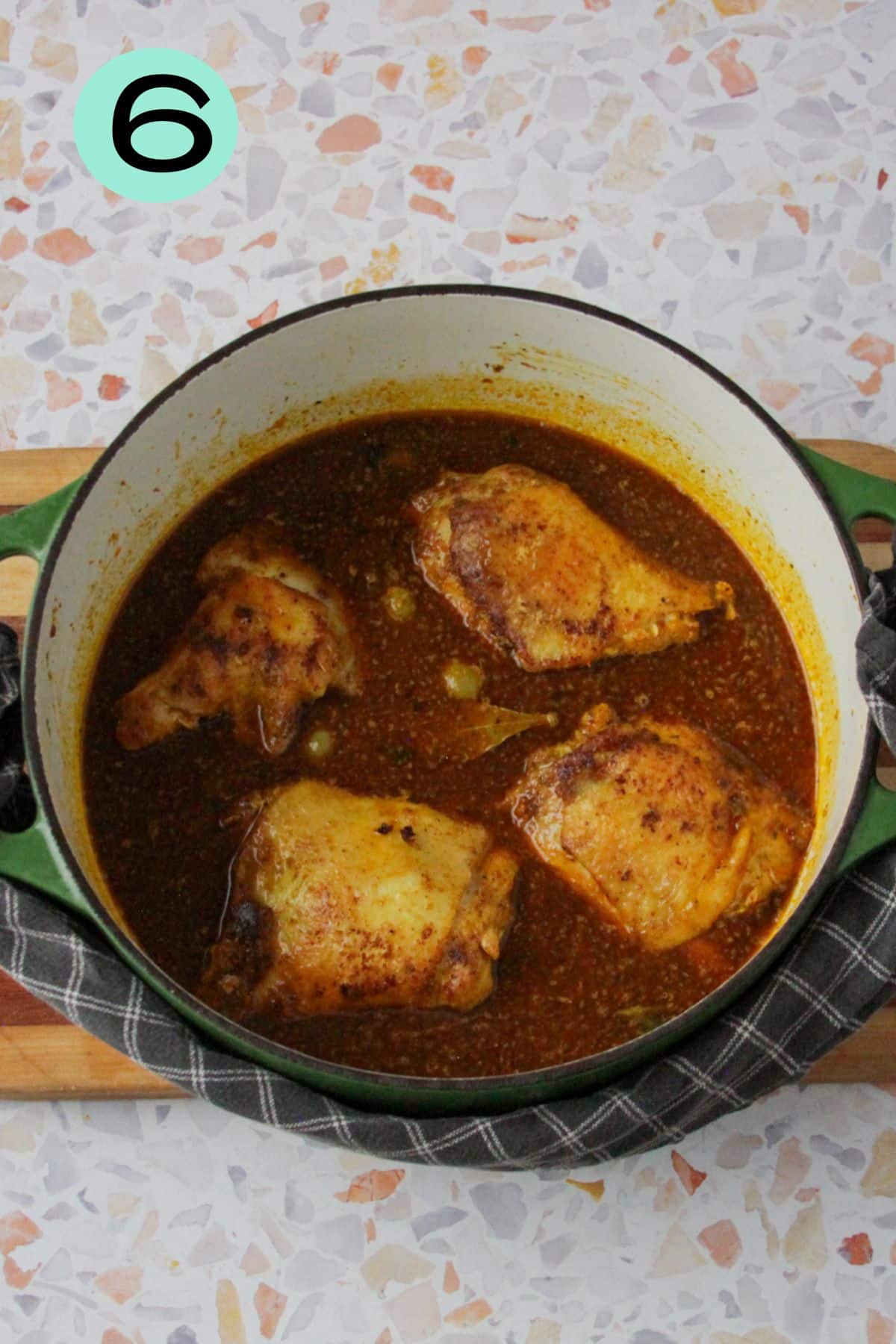
- Once rice has been coated with onion, sofrito and achiote oil, incorporate chicken. Add broth, olives, capers, and bay leaf. Allow to simmer uncovered for five to ten minutes. Then cover and bring heat to low for an additional 15 minutes.
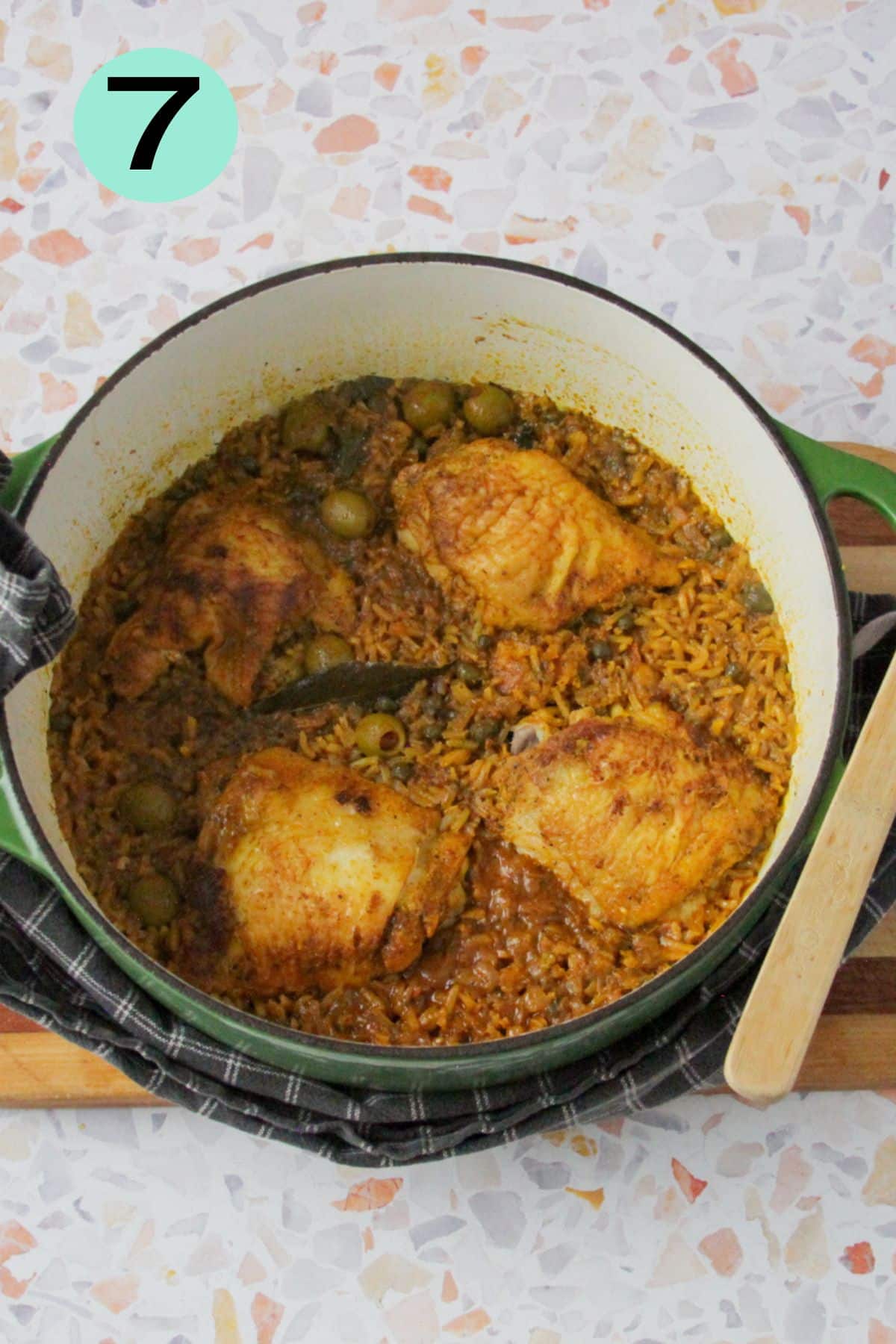
- The rice should have dried out. Check for doneness. If the rice is still not done but is dry, add about an ounce to a quarter cup (2 ounces) of water. Cover and let cook on low for another 5 to 10 minutes. Once cooked, turn the rice with a fork and serve.
Expert Tips
- Wash the rice: There is much debate about whether or not to wash the rice. I grew up sorting or picking through the rice for undesirable twigs, small stones, or off-color rice grains. After picking through the rice, we would wash and rinse it at least three times.
- To wash the rice: Place the rice in a bowl and fill with water to wash the rice. Toss the rice with your fingers for a few seconds, then pour the water onto your other hand while holding on to any grains that escaped with the water. Repeat three times.
- Water needed for cooking: It has been my experience to use the same amount of water as rice. So, for every cup of rice, use a cup of water. You can always adjust the water towards the end of the cooking process, but you can't remove the excess water once you have added it.
- The rice is not cooked: The basic formula that has worked for me has been to cook the rice uncovered for about 5 minutes, with a roaring simmer. Then, lower the heat to low, cover it, and cook it for 10 to 15 minutes. Check for doneness and allow to sit covered for 5 minutes away from the heat.
- If the rice was still mostly raw: then there was not enough water to begin with. Add another one to two ounces (about a quarter of a cup), and cook for an additional five to ten minutes.
- Tomato Paste: Cooking the tomato paste with the Sofrito will start to caramelize the tomato paste giving the paste a bit of taste and sweetness. I use tomato paste over tomato sauce often, so I do not have tomato sauce available all the time. If you do have tomato sauce and not paste, just use one to two tablespoons instead of tomato paste.
Recipe FAQs
Arroz con Pollo is a one-pot dish. The chicken is seared in the same pot as the rice will be cooked.
Allowing ingredients to marinate, and to cook before adding other ingredients. For example: marinate the chicken ahead of time, at least 30 minutes ahead. Render the flavors of aromatic vegetables like onions or peppers (if using) before adding Sofrito. Likewise, allow the Sofrito to cook for about a minute before moving on to the next step.
Yes. Although some rice might have their particular needs while cooking, all types of rice may be used. I grew up eating short-grain, however, my mother ended up favoring jasmine towards her late age, and that is the rice we have been using for a while in our household.
Not much of a difference. Both dishes are rice dishes with added meats. Paella however tends to change regionally in Spain. Coastal regions would make paella with seafood, or seafood and meats, while Paella Valenciana has rabbits, duck, chicken, beans, snails, vegetables, rice, and seasoning.
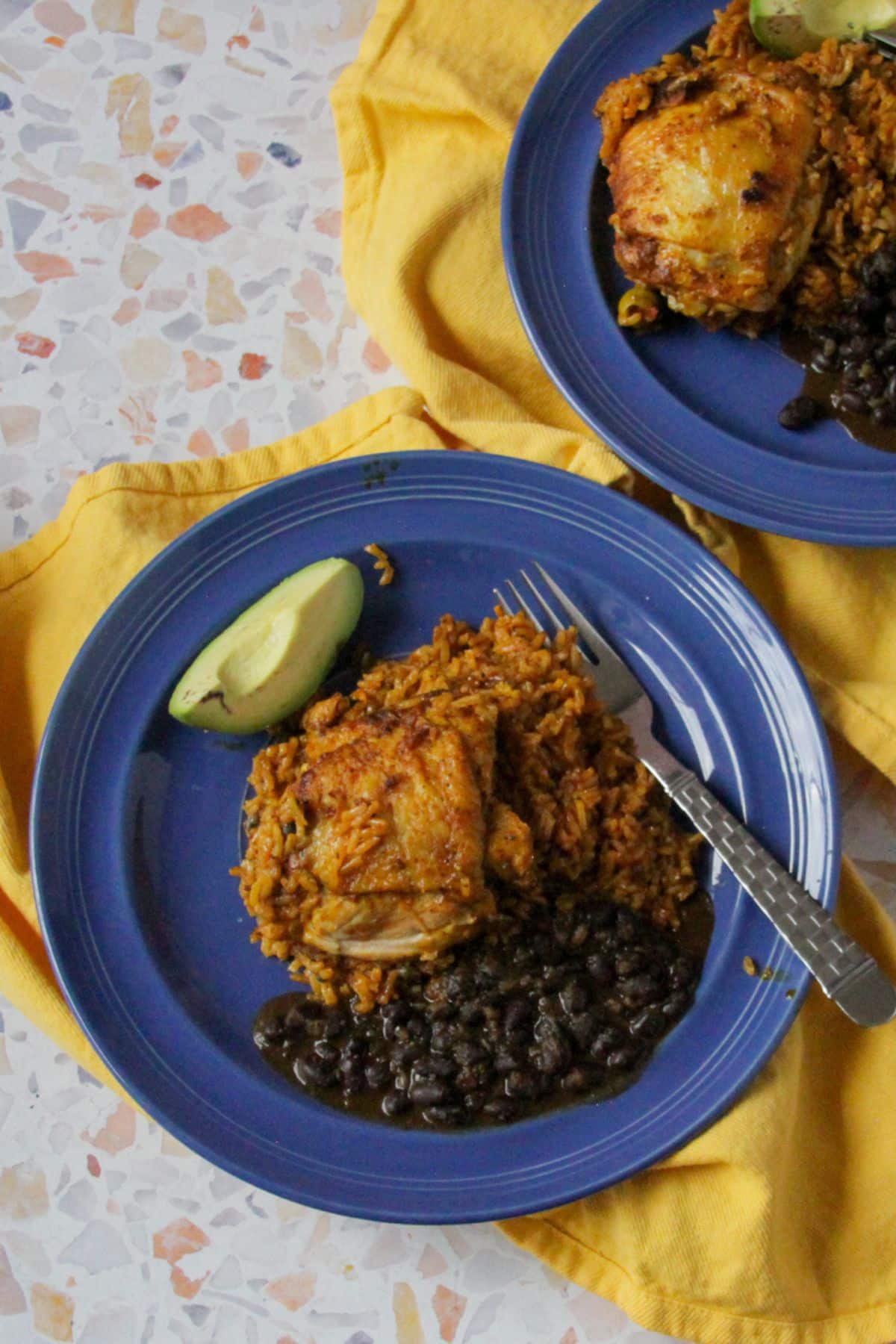
More Puerto Rican Inspired Recipes
I want to know what you think! Did you make this recipe? Please leave a review and a rating below. You can also find me on Instagram! Please sign up for my email list to receive my newest and latest recipes.
📖 Recipe

Puerto Rican Arroz con Pollo, Chicken and Rice
Ingredients
- 4 Chicken Tighs
- 1 tablespoon Garlic Paste
- 1 tablespoon Adobo
- 1 tablespoon Paprika
- 1 Small Onion, or half of a medium/large Small Diced
- 1 tablespoon Sofrito
- 1 tablespoon Sazon
- 1 tablespoon Adobo
- 1 tablespoon Tomato Paste
- 1½ Cups Rice
- 1 tablespoon Achiote Oil
- 1 ½ cup Chicken broth
- 12 Manzanilla Olives
- 1 teaspoon Capers
- 1 Bay Leaf
Instructions
- a.Season and marinate the Chicken in advance. Allow to marinate for at least 30 minutes at room temperature, or overnight if time allows. You want the chicken to hold its own flavor separate from the rice.
- Sear chicken in a deep pan.
- Once chicken has browned on all sides remove from pot and set aside. Add onions to the pan and sautee until translucent.
- Cook sofrito for about a minute or two, then add tomato paste. **See note**
- Add rice and achiote oil. Toss the rice in the oil to cover.
- Once rice has been coated with onion, sofrito and achiote oil, incorporate chicken. Add broth, olives, capers, and bay leaf. Allow to simmer uncovered for five to ten minutes. Then cover and bring heat to low for an additional 15 minutes.
- The rice should have dried out. Check for doneness. If the rice is still not done but is dry, add about an ounce to a quarter cup (2 ounces) of water. Cover and let cook on low for another 5 to 10 minutes. Once cooked, turn the rice with a fork and serve.
Notes
- Wash the rice: There is much debate about whether or not to wash the rice. I grew up sorting or picking through the rice for undesirable twigs, small stones, or off-color rice grains. After picking through the rice, we would wash and rinse it at least three times.
- To wash the rice: Place the rice in a bowl and fill with water to wash the rice. Toss the rice with your fingers for a few seconds, then pour the water onto your other hand while holding on to any grains that escaped with the water. Repeat three times.
- Water needed for cooking: It has been my experience to use the same amount of water as rice. So, for every cup of rice, use a cup of water. You can always adjust the water towards the end of the cooking process, but you can't remove the excess water once you have added it.
- The rice is not cooked: The basic formula that has worked for me has been to cook the rice uncovered for about 5 minutes, with a roaring simmer. Then, lower the heat to low, cover it, and cook it for 10 to 15 minutes. Check for doneness and allow to sit covered for 5 minutes away from the heat.
- If the rice was still mostly raw: then there was not enough water to begin with. Add another one to two ounces (about a quarter of a cup), and cook for an additional five to ten minutes.
- Tomato Paste: Cooking the tomato paste with the Sofrito will start to caramelize the tomato paste giving the paste a bit of taste and sweetness. I use tomato paste over tomato sauce often, so I do not have tomato sauce available all the time. If you do have tomato sauce and not paste, just use one to two tablespoons instead of tomato paste.

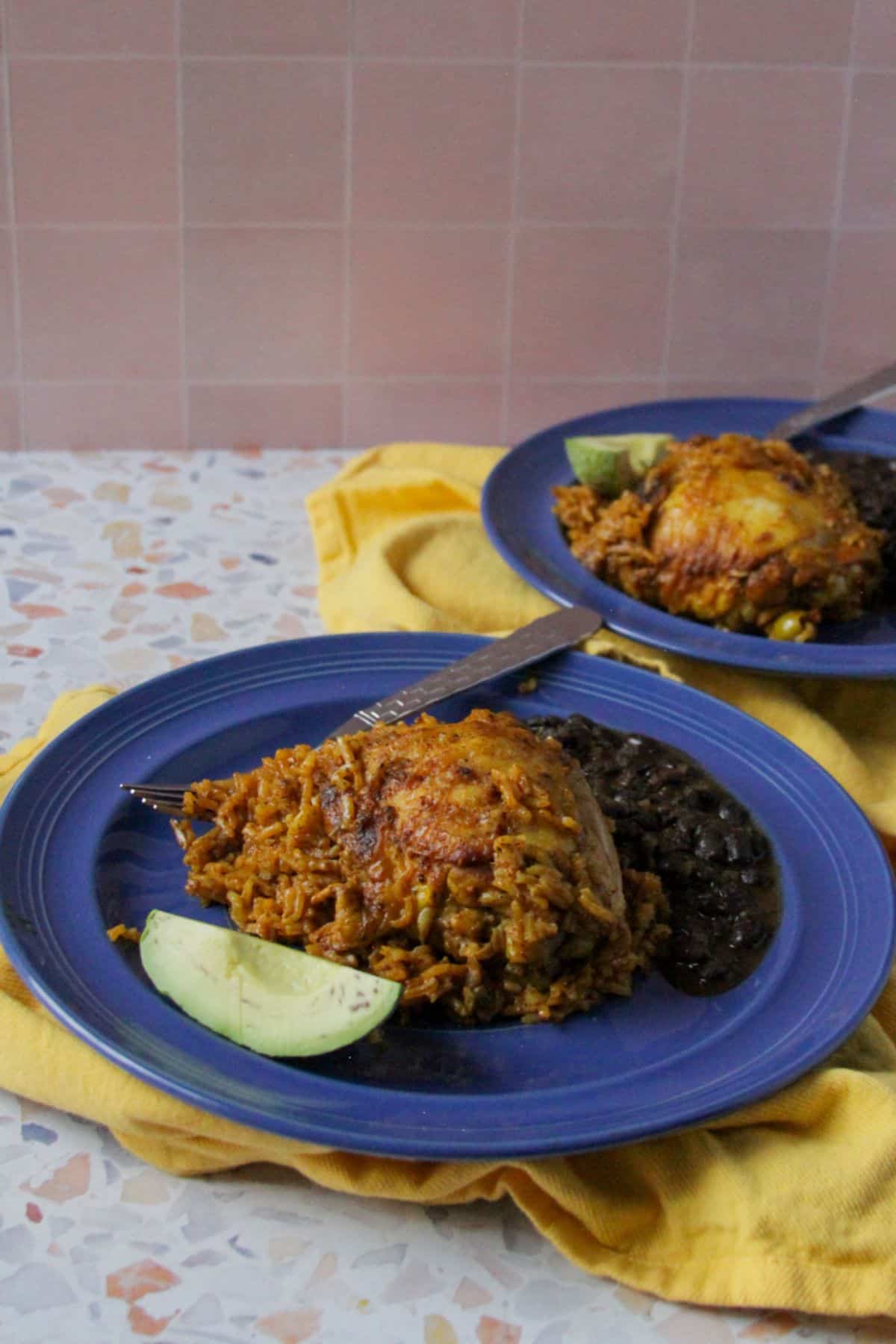


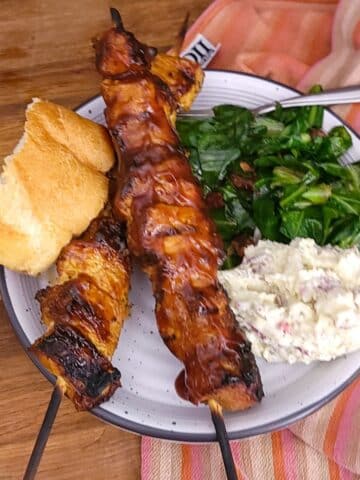
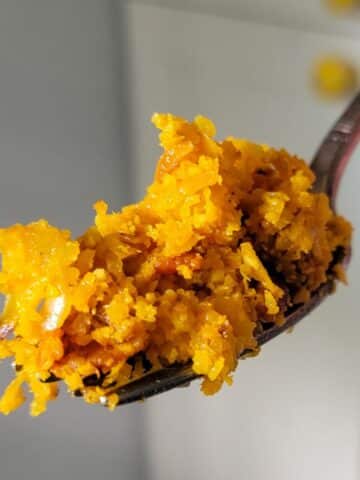
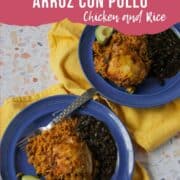
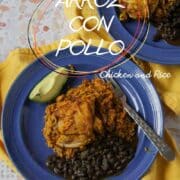

Comments
No Comments